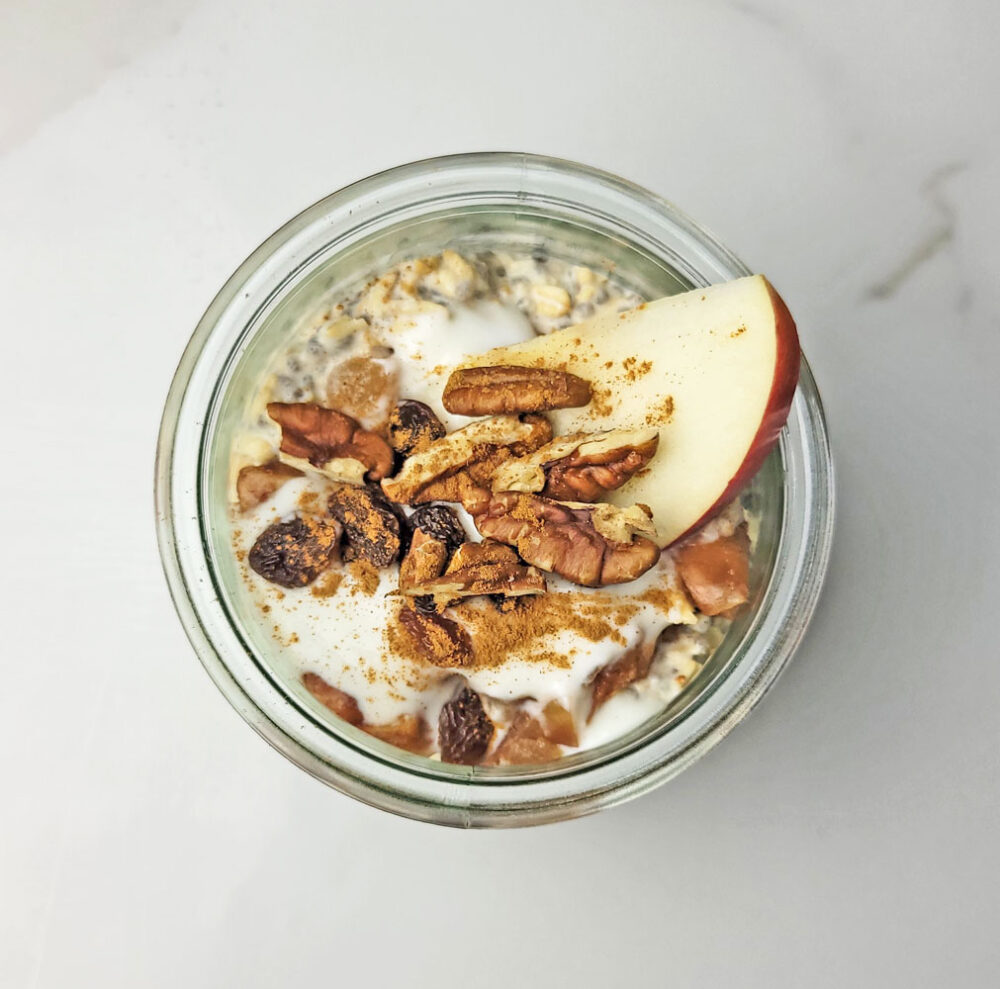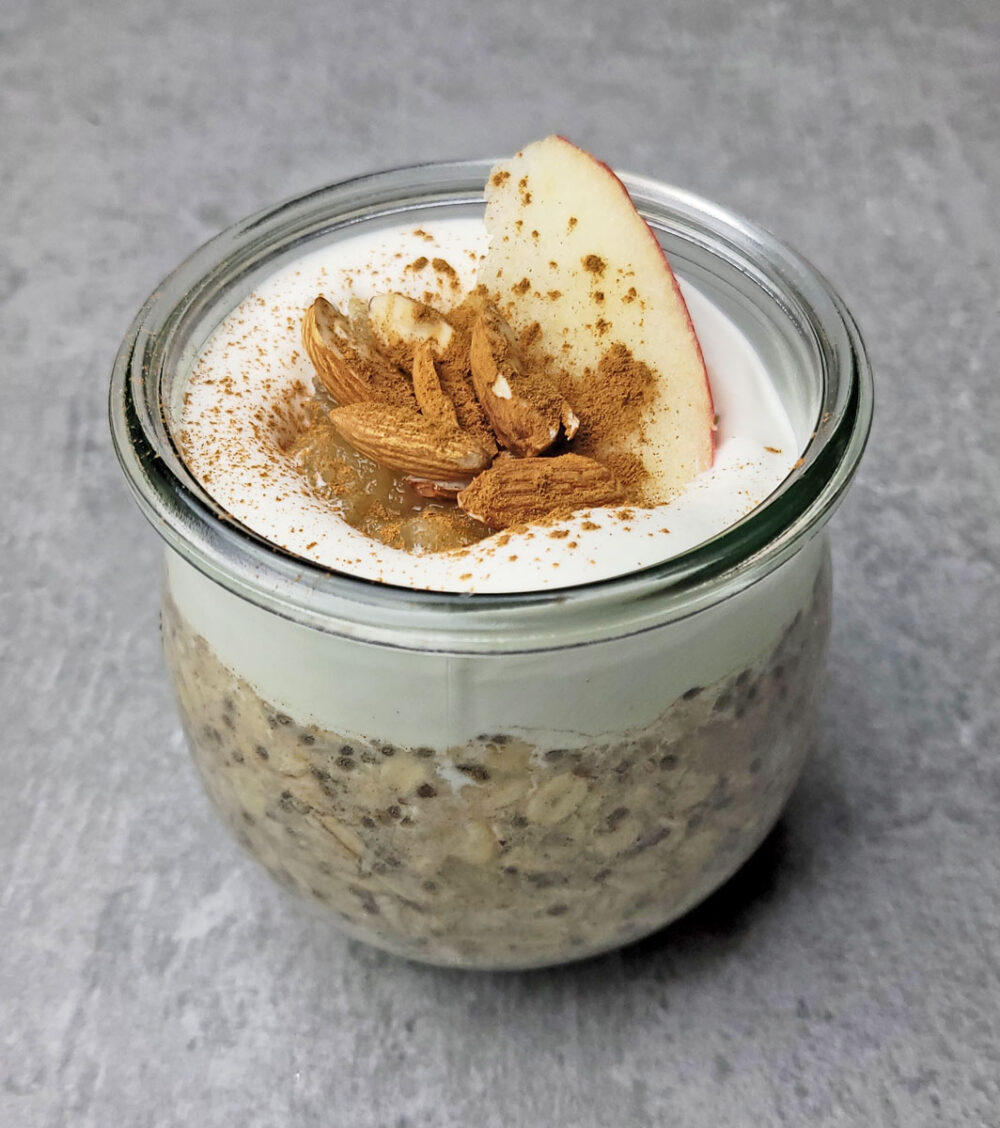How To Wash Apples
Hey there, lovely readers! Today, we’re diving into a topic that might seem simple but is super important in the kitchen – how to wash apples.
You know, those crisp, sweet beauties we love adding to our recipes? Well, before they hit your cutting board, they need a good wash.
Think about it – from the orchard to your kitchen, apples can pick up all sorts of stuff, like pesticides, dirt, germs and other nasties.
So, let’s chat about why it’s a good idea to wash your apples and the easy ways to do it right.

How To Wash Apples: Guide

Importance Of Washing Apples
Beyond the health implications, the importance of washing apples extends to the enhancement of their overall quality and taste.
Fruits accumulate natural waxes, dirt, and debris during cultivation, transportation, and display, affecting their appearance and flavor.
By having a consistent washing routine, we not only rid fruits of external impurities but also improve their sensory appeal.
For instance, washing apples removes the thin layer of wax often applied during post-harvest processing, allowing their natural crunch and flavor to shine through.
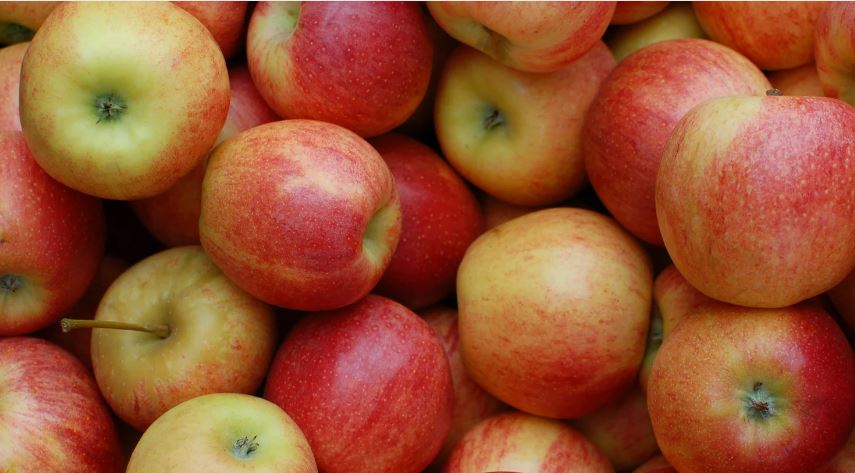
Additionally, clean apples contribute to the success of recipes by ensuring that any added flavors or textures come from intentional culinary choices rather than unintentional contaminants and dirt.
Apples And Their Common Contaminants
Apples can encounter contaminants during the harvesting and transportation process.
From handling by farm workers to packaging and distribution, apples may come into contact with bacteria or environmental pollutants.
Proper washing serves as a preventive measure against potential foodborne illnesses by eliminating these contaminants.
The skin of apples, though rich in fiber and nutrients, can be a hiding place for dirt and microbes.
Therefore, a focused approach on cleaning apples, considering both the surface and potential residues, is key to ensuring the fruit’s safety and maintaining its natural, crisp taste.
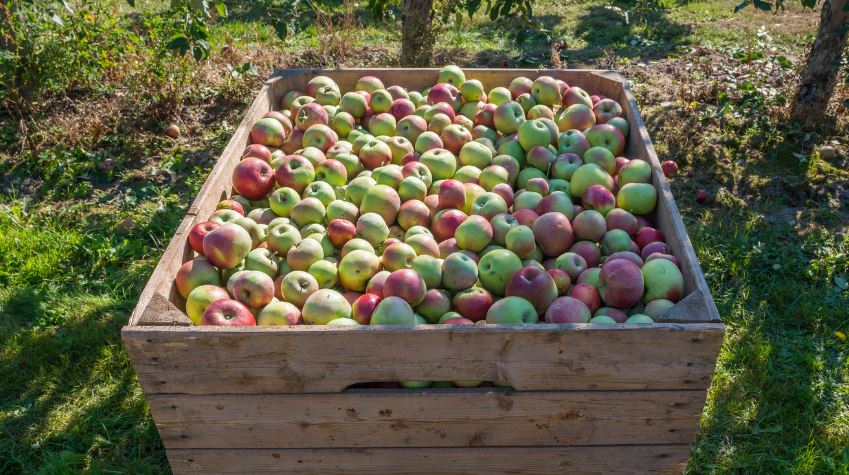
Common Contaminants
Pesticide Residues:
Apples, like many other fruits, often bear the mark of modern agriculture in the form of pesticide residues.
These chemical compounds are employed to protect the apples from pests and diseases during cultivation.
Consistent exposure to these residues, especially when consumed without proper washing, raises potential health concerns.
Pesticides have been associated with various adverse health effects, including links to certain diseases. By washing apples thoroughly, we aim to mitigate this risk.
This helps the fruits we enjoy contribute positively to our well-being without introducing unintended chemical elements into our diet.
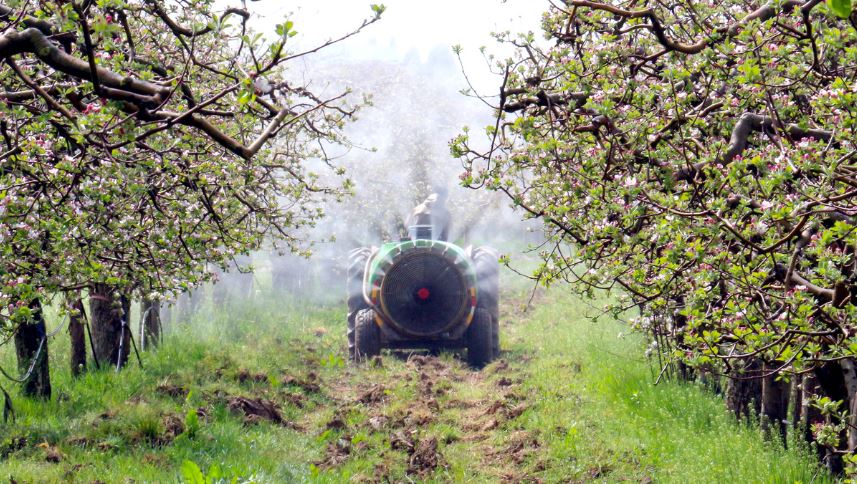
Dirt and Debris:
The journey from the orchard to the market involves numerous touchpoints where apples can accumulate dirt and debris.
During cultivation, apples may come into contact with soil, dust, and other environmental particles.
Additionally, post-harvest handling, transportation, and storage can introduce foreign materials onto the apple’s surface.
These external elements not only compromise the visual appeal of the fruit but can also affect its taste and texture.
Washing apples effectively removes these unwanted contaminants, allowing us to experience the natural, unadulterated flavors and textures that make apples a culinary favorite.
Beyond aesthetics, it’s about providing a clean canvas for the recipe creations that incorporate this versatile fruit.
Apples go through a lot of handling before they get to your kitchen.

Bacteria and Pathogens:
Apples, being exposed to various environments and handling procedures, can potentially harbor bacteria and pathogens.
From the hands of workers to the surfaces during packaging and transport, apples may encounter harmful microorganisms that pose a risk to consumer health.
Washing apples becomes a critical step in reducing the likelihood of foodborne illnesses.
The skin of the apple, though a protective layer, can harbor bacteria, especially if the fruit has been handled by multiple people before reaching the consumer.
Thoroughly washing apples under running water or using a food-safe solution minimizes the risk of ingesting harmful pathogens, promoting both food safety and peace of mind when enjoying this nutritious fruit.
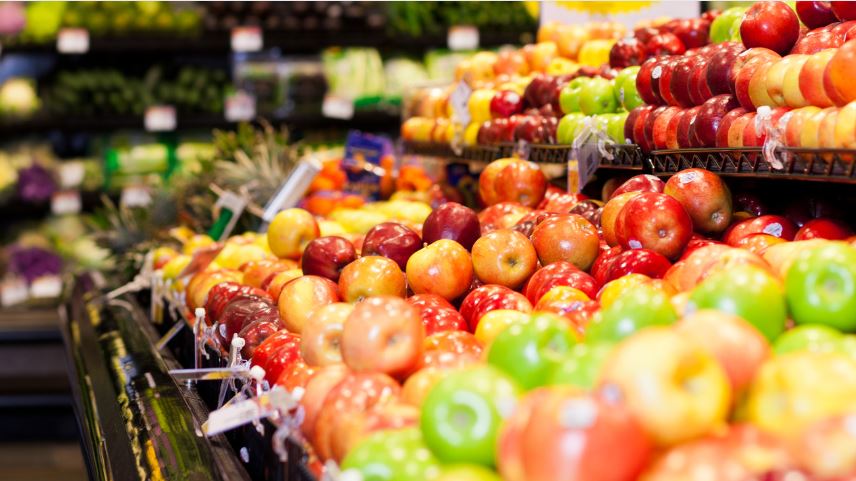
Choosing The Right Apples
Organic vs. Conventional Apples:
The choice between organic and conventional apples is a decision that goes beyond personal preference and often involves considerations of health and environmental impact.
Organic apples are cultivated without synthetic pesticides or fertilizers, relying on natural methods to manage pests and promote soil health.
Opting for organic apples reduces the risk of pesticide residues, aligning with the preferences of those seeking a cleaner, more environmentally friendly option.
On the other hand, conventional apples may undergo more intensive pesticide use during cultivation, potentially leaving residues on the skin.
When deciding between the two, consumers weigh the potential health benefits of organic choices against factors such as cost and availability.
Regardless of the choice, washing apples thoroughly remains essential to ensure any residues are minimized, contributing to a safer and healthier consumption experience.

Selecting Fresh and High-Quality Apples:
When shopping for apples, opt for those that are firm, free from bruises, and have vibrant skin. A fresh apple should feel heavy for its size, indicating juiciness and ripeness.
Avoid apples with wrinkled or dull skin, as these may be indicators of age or poor storage conditions.
Additionally, check the stem end – a fresh apple typically has a greenish hue around the stem.
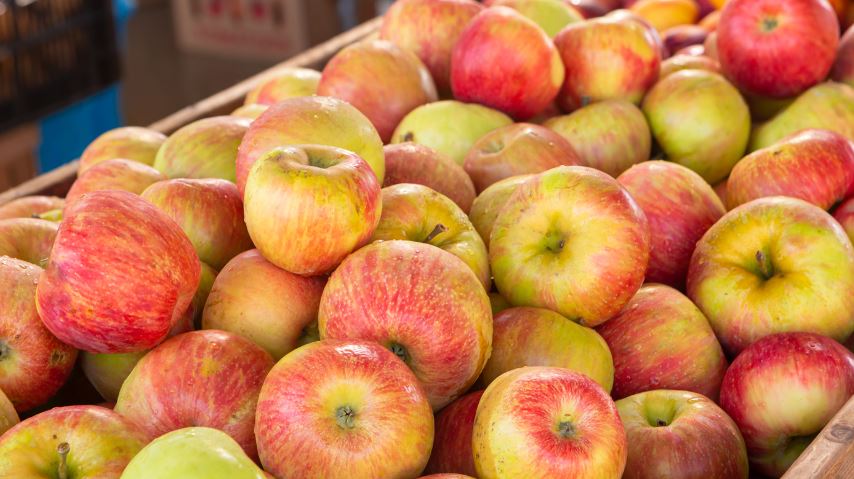
By choosing fresh and high-quality apples, you set the stage for a more enjoyable eating experience.
These apples not only contribute better flavors and textures to your recipes but also provide a more nutritious addition to your diet.
So, when shopping the apple aisle, prioritize freshness and quality for your recipes and snacks.
Supplies Needed To Wash Apples
Running Water:
The cornerstone of apple washing is a steady stream of running water. This is the most basic yet important element in the process.
Under cool, running water, apples can be thoroughly rinsed, allowing any loose dirt, debris, or contaminants to be washed away.
This initial step sets the foundation for a clean and safe apple, making it an indispensable part of the washing routine.
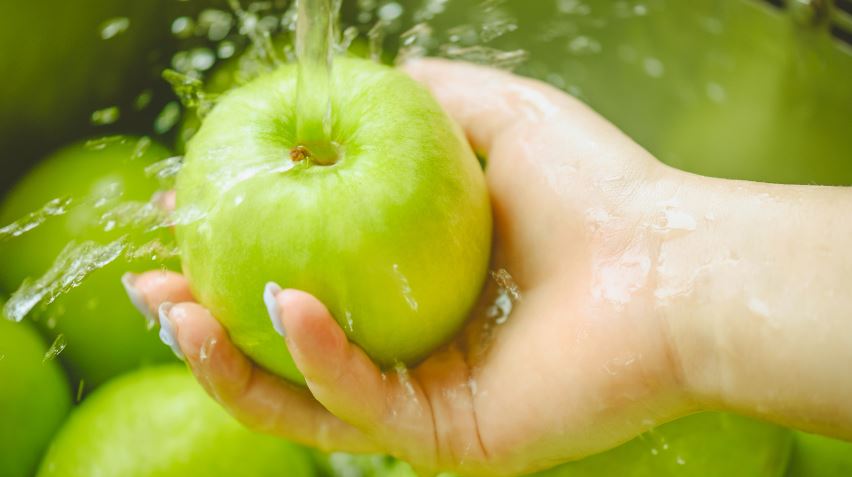
Baking Soda (Sodium Bicarbonate) or Fruit Wash Solution:
For an extra layer of cleanliness, consider using a solution of baking soda or a fruit wash. Baking soda is known for its natural cleaning properties and can help remove pesticide residues and waxy coatings on apples.
Alternatively, specially formulated fruit wash solutions are designed to break down contaminants without compromising the safety of the fruit. These solutions are readily available in stores or can be easily prepared at home.
Immersing apples in this solution or using it along with a brush enhances the cleaning process, ensuring a more thorough removal of impurities.

Soft Brush, Sponge or Cloth:
To address any stubborn residues or dirt, a soft brush or cloth comes in handy. Gently scrubbing the surface of the apple with a soft brush or cloth helps dislodge particles that running water alone might not eliminate.
The brush should have soft bristles to avoid damaging the delicate skin of the apple while effectively removing any remaining contaminants.
This step is particularly useful for apples with thicker or rougher skins, ensuring a comprehensive cleaning process.
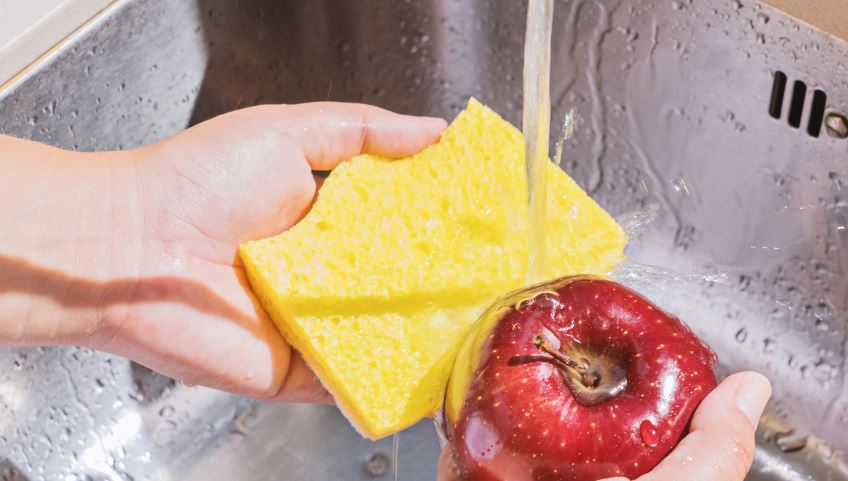
Towel or Paper Towels:
Post-wash, proper drying is important to complete the process. Towels or paper towels can be used to pat the apples dry, removing any lingering moisture that might encourage bacterial growth.
Drying also contributes to the visual appeal of the apples, preventing water spots and maintaining their natural shine.
Whether air-drying or using towels, this step ensures that the apples are not only clean but also ready to be enjoyed in their freshest state.
By gathering these simple supplies, you set the stage for a thorough and mindful apple washing routine, ensuring both the safety and quality of your apples.
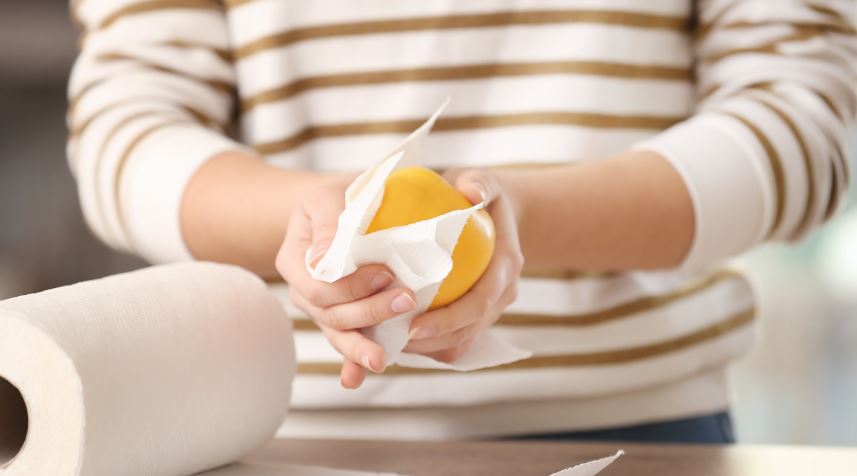
How To Clean Apples Step By Step
Proper Handwashing Before Handling:
Before getting started, ensure your hands are clean by washing them thoroughly with soap and water. This step helps prevent the transfer of any potential contaminants from your hands to the apples.
Using a Clean Brush or Cloth for Scrubbing:
Place the apples under a stream of cold, running water. Rinse each apple individually, turning and holding it under the water to ensure all sides are cleaned.
For stubborn residues or thicker-skinned apples, use a soft brush or cloth to gently scrub the surface. This aids in removing dirt, wax, and any lingering contaminants.
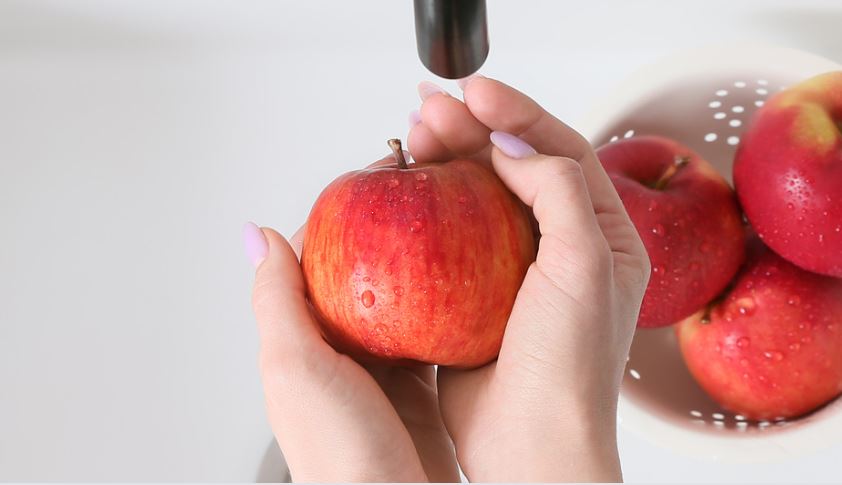
Soaking Apples in Baking Soda Solution:
For an extra layer of cleaning, you may choose to soak the apples in a baking soda solution. Mix two teaspoons of baking soda with four cups of water water in a bowl.
Allow the apples to soak for a few minutes, gently agitating the water to ensure the solution reaches all surfaces.
Baking soda helps break down pesticides and removes the waxy coatings. After soaking, rinse the apples under running water to eliminate any remaining residue. Source
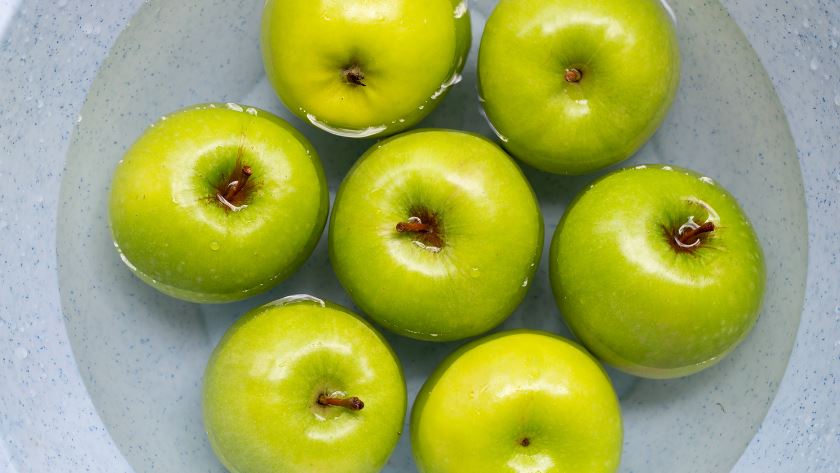
Drying Apples Thoroughly
After the washing process, it’s important to dry the apples thoroughly.
Air-Drying:
Place the washed apples on a clean surface or in a colander to air-dry. This method allows excess water to evaporate naturally.
Using a Towel or Paper Towels:
Alternatively, pat each apple dry using a clean towel or paper towels. Gently pat the surface to absorb any remaining moisture.
By following these steps, you ensure that your apples are not only visually appealing but also free from contaminants.

Tips for Efficient Apple Washing
Peel Off Stickers Before Washing:
Start by peeling off any stickers attached to the apples before washing. Stickers can trap dirt and impurities, and removing them beforehand ensures a cleaner surface.
Addressing Waxy Coatings:
Apples often have a natural wax coating to retain moisture and freshness. Some may have an additional layer applied for preservation.
To effectively remove these coatings, consider using a soft brush or cloth during the washing process. Alternatively, soak the apples in a vinegar solution to break down waxy residues.

Visual Inspection:
Before and during the washing process, visually inspect each apple. Look for any visible signs of contamination, such as dirt, bruises, or discolorations.
Ensure you check the stem and blossom ends, where contaminants may accumulate.
Feel for Texture:
Run your fingers gently over the apple’s surface to detect any irregularities in texture.
A thorough tactile examination can help identify potential contaminants or damaged areas that may need extra attention during cleaning.
Storing Washed Apples Properly
Air-Dry Before Storage:
After washing, allow the apples to air-dry or use a clean towel to pat them dry.
Ensuring the apples are completely dry before storage helps prevent bacterial growth and maintains their crisp texture.
Refrigeration for Longevity:
To extend the shelf life of your washed apples, store them in the refrigerator. The cool environment helps slow down the ripening process and preserves the freshness and flavor.
Use a perforated plastic bag or place them in the crisper drawer for optimal storage.
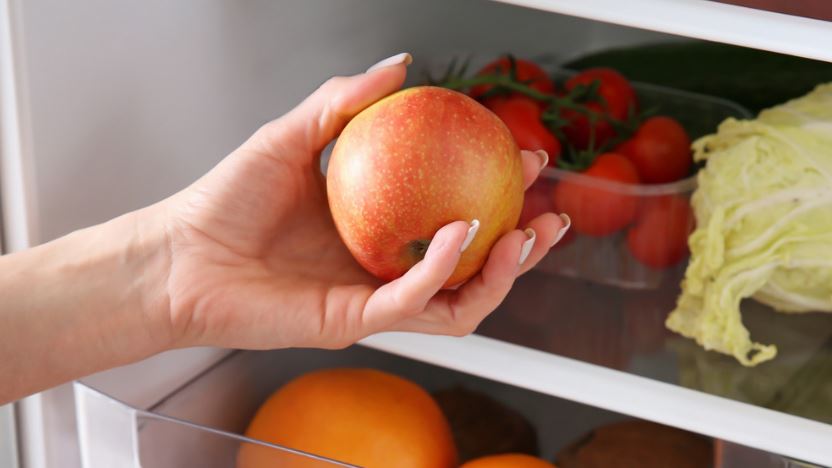
Avoid Crowded Storage:
Store apples in a way that allows for air circulation, preventing them from touching or crowding each other.
This practice minimizes the risk of bruising and helps maintain the quality of the apples over time.
By incorporating these practical tips into your apple washing and storage routine, you not only enhance the cleanliness of the fruit but also ensure they stay fresh and delicious for an extended period.
Handling Bruised or Damaged Apples
Isolate Bruised Apples:
Identify any apples with visible bruises or damage. Isolate them from the rest to prevent the spread of spoilage.
Bruised areas are more susceptible to bacterial growth, and separating them helps maintain the quality of the remaining apples.
Cut Away Bruised Portions:
If the bruising is superficial, consider cutting away the affected portions before washing. This step not only improves the appearance of the apple but also eliminates potential contaminants that might have entered through the damaged skin.
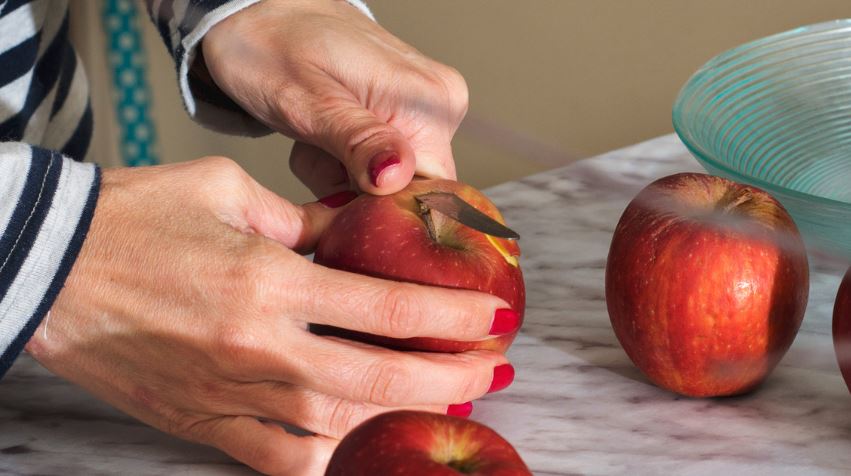
Use Damaged Apples Promptly:
If you have apples with minor bruises, plan to use them promptly. Bruised areas can accelerate the ripening process, so incorporating them into recipes or consuming them soon after purchase can minimize waste.
Compost or Discard Severely Damaged Apples:
For apples with extensive bruising or damage, it’s advisable to compost them or discard them properly. Severely damaged apples may compromise both safety and taste.

Cleaning Apples FAQ
Rinsing apples under cold, running water is a good start to remove dirt and residues. For added cleanliness, consider using a soft brush or cloth to scrub the surface gently.
Water is effective in cleaning apples, but if you want an extra layer of cleanliness, you can use a vinegar solution. Mix one part white vinegar with three parts water and soak the apples for a few minutes before rinsing.
Peel off stickers before washing apples. If they leave residue, use your fingernail or a soft brush to gently scrape it off. Alternatively, a bit of cooking oil can help loosen sticker residue.
While pre-packaged apples are often labeled as pre-washed, giving them a quick rinse under cold, running water is a good practice to ensure any potential contaminants are removed.
After washing, ensure the apples are completely dry before storing. Refrigerate them in a perforated plastic bag or the crisper drawer to maintain their freshness. Avoid crowding for better air circulation.
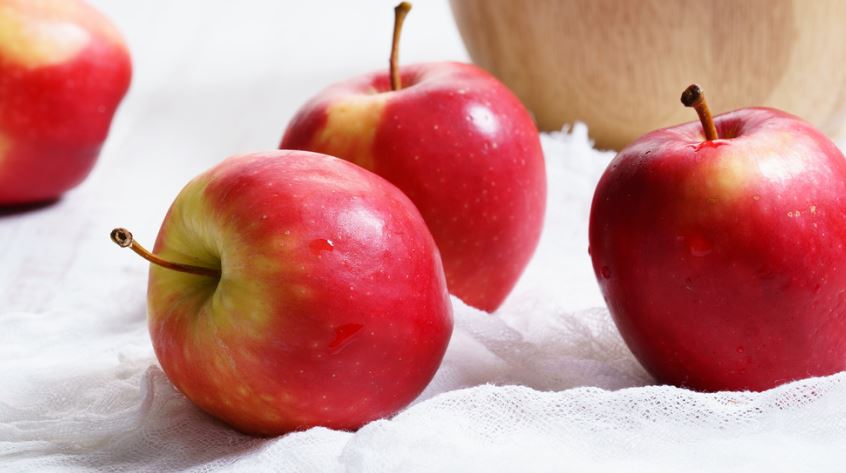
Conclusion
From the orchard to your kitchen, apples undergo a journey laden with potential contaminants and we hope this guide helps you with how to wash apples.
By rinsing under cold, running water, employing brushes or cloths, and optionally utilizing vinegar solutions, we strip away pesticides, dirt, and unwanted residues, unveiling the true essence of this beloved fruit.
The removal of stickers, wax, and an inspection for visible signs of contamination will help with the cleansing process, so that each apple we use in our recipes is both quality and clean.
Thanks a bunch for hanging out with us and diving into the world of apple washing! We hope you picked up some handy tips to keep your apples clean, crisp, and ready for all your delicious creations.
Remember, a little wash goes a long way in making your meals not just tasty but also safe. So, big thanks for reading, and here’s to many more kitchen adventures and scrumptious bites ahead! 🍎🚿✨
Check out our most popular apple recipes!
Swiss Overnight Oats With Apples
Freeze Drying Tips For Fruit
How Freeze Drying Works To Preserve Fruit
Live edge charcuterie boards for fruit trays.


